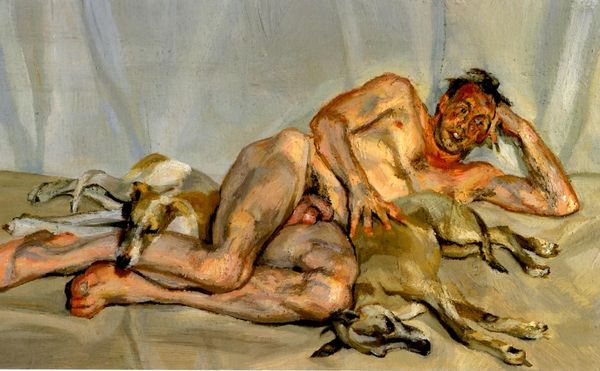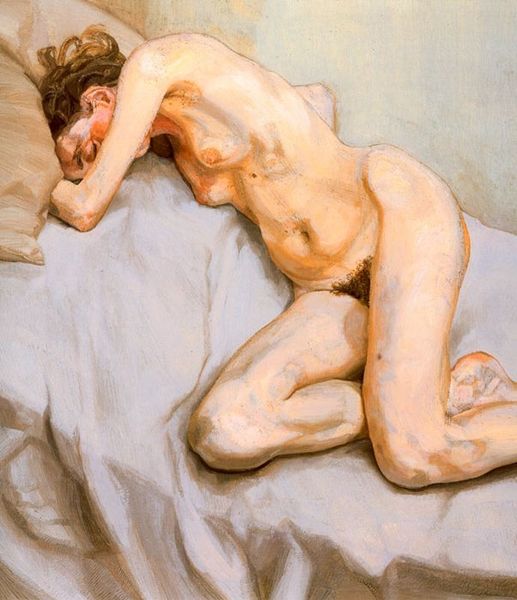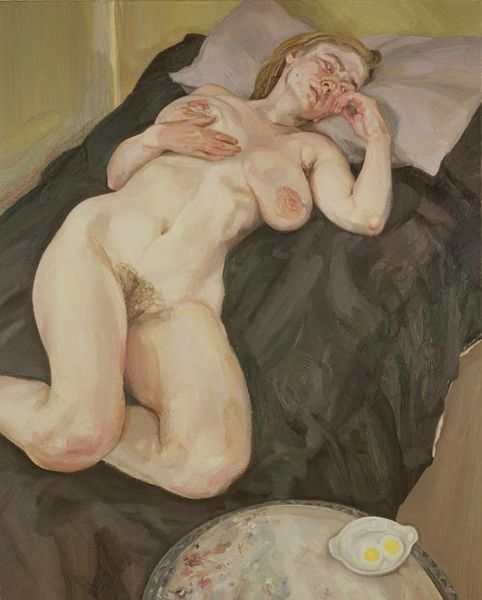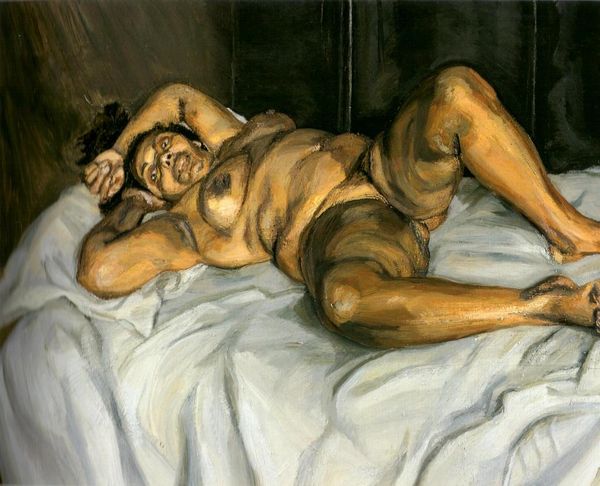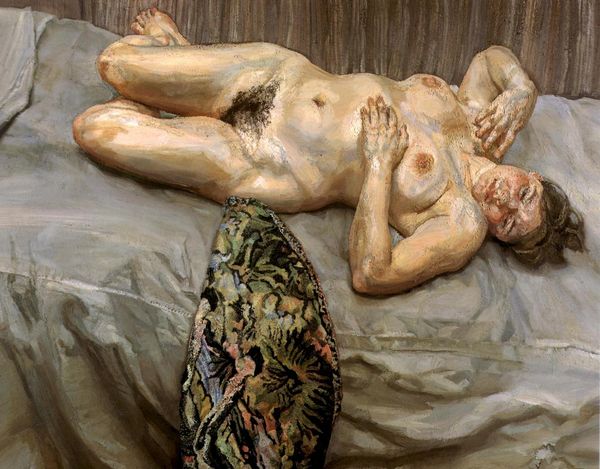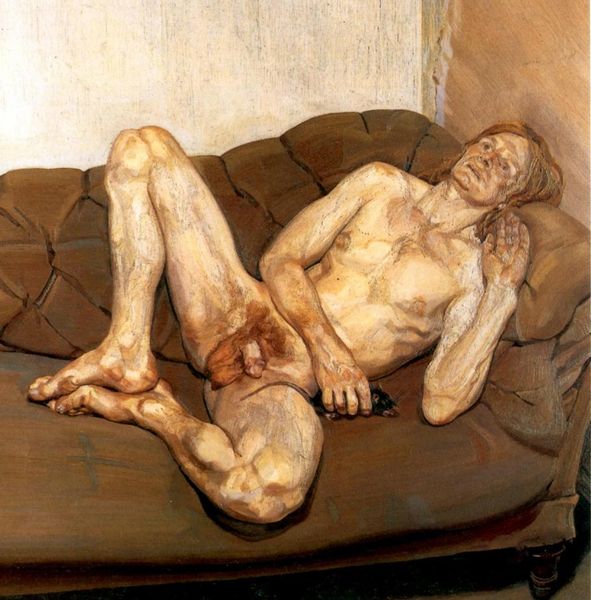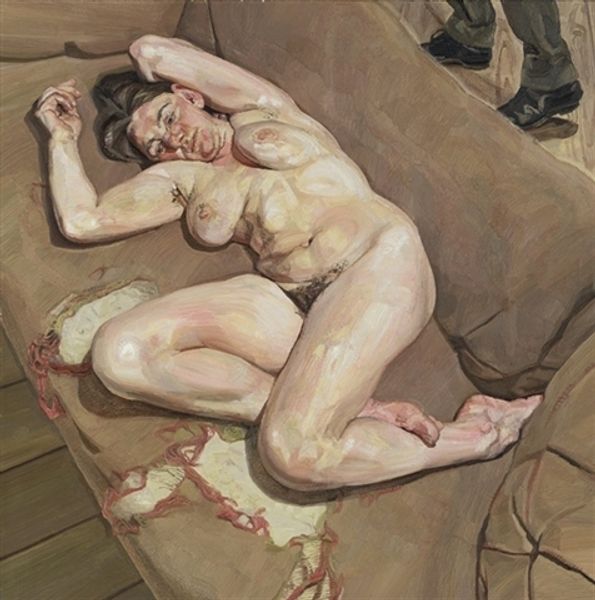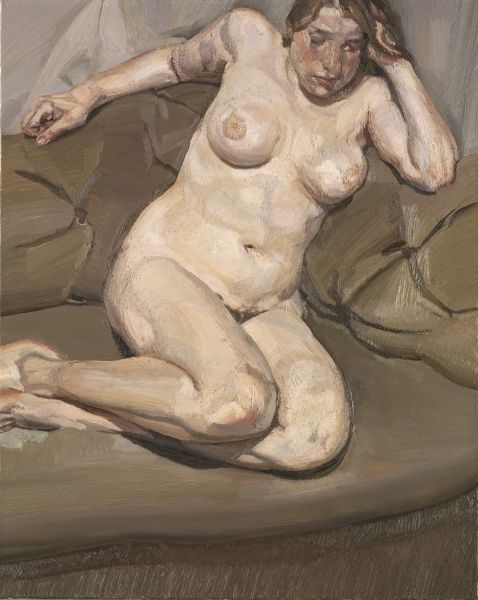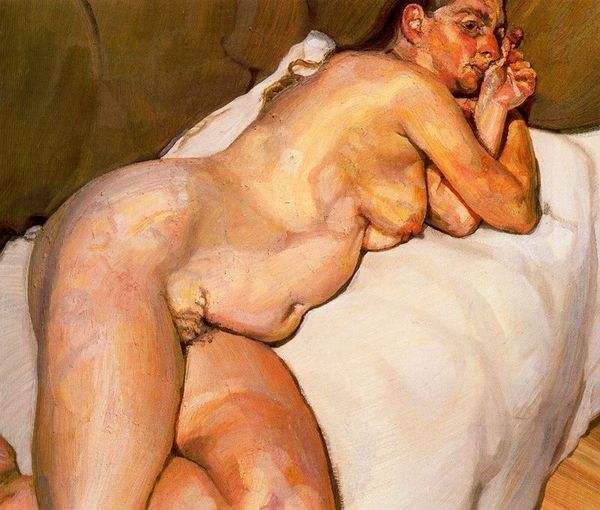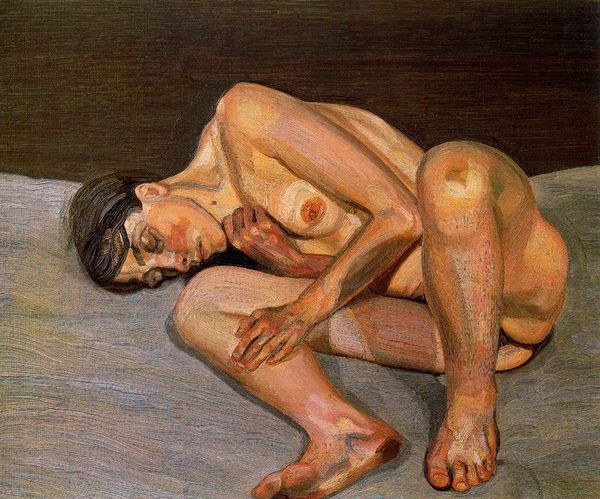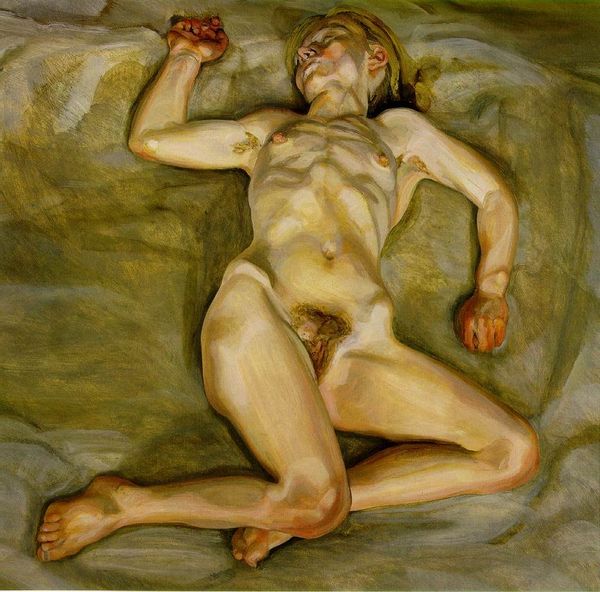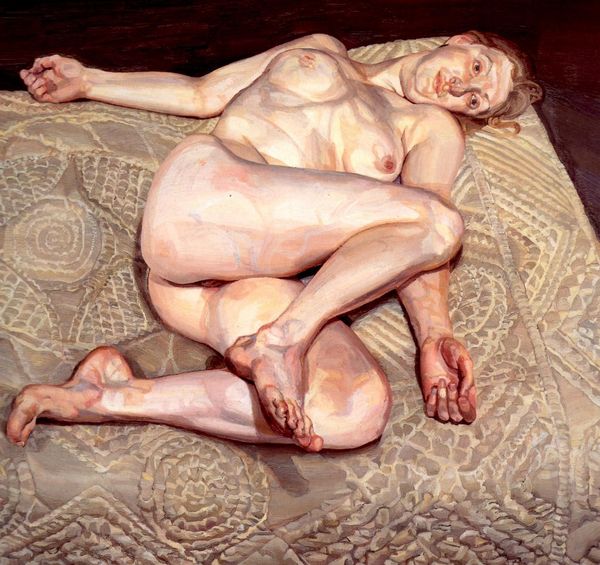
oil-paint
#
portrait
#
contemporary
#
oil-paint
#
figuration
#
oil painting
#
female-nude
#
neo expressionist
#
neo-expressionism
#
genre-painting
#
history-painting
#
nude
#
realism
Copyright: Lucian Freud,Fair Use
Curator: So, here we have Lucian Freud's "Naked Portrait," completed in 2005. He used oil paint in this figurative composition of a nude, following a Neo-Expressionist approach. What are your initial thoughts? Editor: It’s intensely… raw. Stripped bare in every sense, not just physically. It almost feels invasive, like catching someone unawares in a very private moment, almost confronting in its unflinching honesty. Curator: That feeling, that's what many find so powerful and uncomfortable in Freud's work. It breaks from idealized forms, wouldn't you say? You can observe it both stylistically and psychologically. It challenges historical genre conventions, perhaps echoing earlier realist movements. What strikes you most in the details? Editor: The way the paint is layered. He’s sculpted this body rather than painted it, which, paradoxically, gives it this heavy vulnerability. It's like the weight of existence itself is etched into the flesh, every lump, every mark rendered visible. It's interesting; how does he balance realism with this expressiveness? Curator: Freud aimed to capture something more than a mere likeness. It’s about psychological truth, exploring how we perceive ourselves, perhaps distorting our realities. Some perceive influences of earlier masters like Rembrandt in the psychological depth, particularly concerning how the subject occupies her own personal, interior space. Editor: Absolutely, there is definitely some Old Masters inspiration. There's something timeless, that almost confrontational gaze combined with the very modern brushstrokes… a really daring combination, maybe intended to disturb. Are there typical symbols Freud tended to reuse throughout his career? Curator: Freud avoided consistent symbol usage, I believe. He seems to rely more on his models’ physicality and emotional expressiveness to convey symbolic meaning. Think about the titles he would use for his paintings. Very minimal... Editor: True, nothing too symbolic. The composition and the flesh tone does lend the work a sense of something visceral, unmasked... and unedited! Curator: Freud created an individualistic mode of figurative representation. By showing a person unfiltered and "naked," as he put it, Freud sought to reveal underlying truths about the human condition. It shows his subject unburdened by social constraints and norms. Editor: Right. And it's also important how he presents it. Very in your face. "Here I am". Whether the viewer feels compassion, disgust, attraction or rejection, it's a testament to his abilities, if maybe an odd choice for "audio tour friendly"... Curator: Yes, quite intense. Editor: Well, intense is good. Memorable, anyway!
Comments
No comments
Be the first to comment and join the conversation on the ultimate creative platform.

